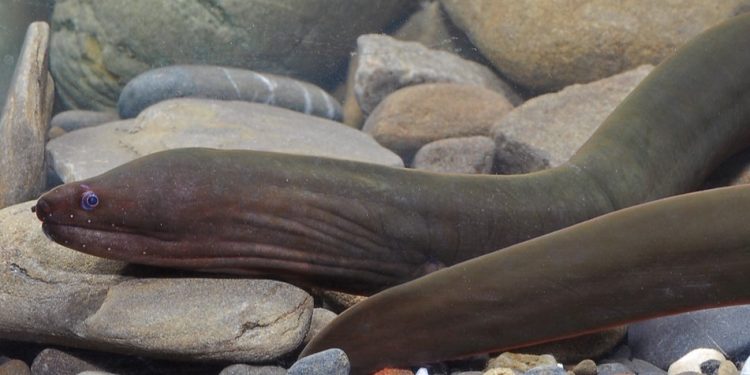Jakarta, Indonesia Sentinel — A team of researchers has identified a new species of moray eel, named after Hades, the ruler of the underworld in Greek mythology. Unlike typical moray eels that inhabit salty ocean waters, this newly discovered species thrives in muddy river estuaries.
Officially named Uropterygius hades, the discovery was published in the scientific journal ZooKeys in December 2024 by a team of scientists from Taiwan’s National Sun Yat-sen University, the Western Philippines University, and Japan’s Kitakyushu Museum of Natural History and Human History.
While around 230 species of moray eels have been scientifically documented, most are marine dwellers. Some, like Gymnothorax polyuranodon, spend much of their lives in freshwater, and others, such as Strophidon sathete, can tolerate brackish water. However, moray eels specifically adapted to estuarine habitats with a mix of salt and freshwater remain rare.
“Uropterygius hades sp. nov. is a rare species of moray eel that inhabits turbid estuarine environments, preferring soft, muddy substrates where it burrows and hides among rocks or fallen mangrove leaves,” the study, led by Dr. Wen-Chien Huang, stated, as reported by Kumparan.
New Species Discovery
The dark-colored eel was discovered accidentally when three researchers from National Sun Yat-sen University were investigating a cave in the Puerto Princesa Underground River in the Philippines. Their mission was to observe aquatic life in the area and locate another cave-dwelling eel species, the bean-eyed moray (Uropterygius cyamommatus). Although they did not find their original target, the team collected specimens of the unusual dark, slender eel.
Back in the laboratory, DNA tests confirmed the eel as a distinct species. Researchers observed that Uropterygius hades exhibited rare burrowing behavior, often burying its tail first in the aquarium substrate. It also displayed extreme sensitivity to light, repeatedly attempting to hide when exposed.
Read also : Researchers Discover New Crayfish Species in Papua, Indonesia
The eel’s small eyes are believed to be an adaptation to low-light environments, and it has fewer sensory pores on its head compared to related species. Researchers suspect the eel relies more on chemical perception—or chemoreception—than vision to detect prey and avoid predators, enabling it to remain concealed in muddy environments.
Due to its eerie appearance and shadowy habitat, the eel was aptly named ‘Hades.’ Dr. Huang revealed that the inspiration for the name came from Ralph Fiennes’ portrayal of Hades in the film Clash of the Titans.
The discovery of Uropterygius hades not only expands our understanding of moray eel biodiversity but also highlights the hidden wonders of murky estuarine ecosystems. As researchers continue to uncover the secrets of these enigmatic creatures, Hades serves as a reminder of how much remains unexplored beneath the surface of our planet’s waterways.
(Raidi/Agung)

























